What is Osgood-Schlatter Disease?

Are you a young athlete? And do you have constant pain, swelling, and soreness in your knees? Then, you might be suffering from Osgood-Schlatter disease. This bone problem affects up to 21% of adolescent athletes, despite the fact that many people aren’t even aware of it.
What is Osgood-Schlatter?
Osgood-Schlatter disease is a bone condition that causes pain and swelling below the knee joint at the point where the patellar tendon connects to the top of the shinbone (tibia), known as the tibial tuberosity. Inflammation of the patellar tendon, which runs over the kneecap, is also possible.
Osgood-Schlatter disease is quite common in young athletes who are involved in sports that involve a lot of jumping or running.
What causes Osgood-Schlatter?
The irritation of the bone growth plate causes Osgood-Schlatter disease. Bones grow near the joint’s ends, in an area known as the growth plate, rather than in the middle. While a child is still in his/her growing years, these areas of development are made of cartilage rather than bone. Because cartilage is never as strong as bone, excessive stress can cause the growth plate to hurt and swell.
The patellar tendon attaches to the growth plate in the front of the leg bone via the tendon from the kneecap (patella) (tibia). The thigh muscles (quadriceps) attach to the patella and pull on it, putting tension on the patellar tendon. The patellar tendon then pulls on the tibia in the growth plate area. Tenderness at the point where the patellar tendon attaches to the top of the tibia can result from any movement that causes repeated extension of the leg.
Activities that strain the knee, particularly squatting, bending, or running uphill (or stadium steps), cause the tissue around the growth plate to swell and hurt. It is also painful to strike or bump the tender area. Kneeling can be excruciatingly painful.
What are the symptoms of Osgood-Schlatter’s disease?
Running, jumping, and other sports-related activities frequently cause painful symptoms. In some young people, both knees may have symptoms, although one knee may be worse.
Following could be some typical symptoms:
- Tibial tubercle tenderness and pain in the knee
- The tibial tubercle is swollen.
- Muscle tension in the front or back of the thigh
How is Osgood-Schlatter treated?
The goal of Osgood-Schlatter disease treatment is to reduce pain and swelling. This usually entails restricting physical activity until your child can enjoy it without discomfort or significant pain afterwards. In some cases, a period of inactivity followed by a strength conditioning program is required. However, if your child is not in severe pain or limping, they may be safe to continue participating in sports.
Our doctor may suggest additional treatment options, such as:
- Exercising your limbs
- Stretching the quadriceps and hamstring muscles in the front and back of the thigh may help relieve you of the pain and prevent the disease from returning.
- Nonsteroidal anti-inflammatory drugs (NSAIDs) reduce pain and swelling. Examples include ibuprofen, aspirin, and naproxen.
- Icing the inflamed area may help to relieve pain and swelling. Several times a day, apply cold packs for 20 minutes at a time. Remember, ice should not be applied directly to the skin.
When is surgery needed for Osgood Schattler’s disease?
Surgery is not required in almost all cases. When a child stops growing, the cartilage growth plate eventually stops growing and fills in with bone. Bone is more durable than cartilage and less prone to irritation. Because there is no new growth plate that can have any kind of injury, the pain and swelling go away. When an adolescent stops growing, the pain associated with Osgood-Schlatter disease almost always ends.
In a few cases, the pain continues even after the bones have stopped growing. Surgery is only recommended if bone fragments have not healed. Surgery is never performed on a growing athlete because the growth plate can be harmed.
If the athlete’s pain and swelling persist despite treatment, he/she should be evaluated by our doctor on a regular basis. If the swelling persists, the patient should be re-evaluated.
By when do symptoms of Osgood Schattler’s disease disappear?
Most symptoms will vanish once a child has completed the adolescent growth spurt, which occurs around the ages of 14 for girls and 16 for boys. As a result, surgery is rarely advised. However, the tubercle’s prominence will remain.
Seek expert consultation to treat Osgood Schattler’s disease
Our bone expert, Dr Rik Kundra, is a British orthopaedic sports medicine doctor and surgeon with over 18 years of experience. He is a specialist in the most recent minimally invasive, bone-preserving, and recovery-enhancing trends in knee replacement surgery, and he takes a conservative approach with his patients. He treats athletes of all abilities, from elite professionals to weekend warriors, for sports injuries. Besides, he is active in surgical education and research, including evaluating novel surgical techniques.
Schedule an appointment today.
Disclaimer
All content and media on this page are created and published for informational purposes only. It is not intended to be a substitute for professional medical advice and should not be relied on as health or personal advice. Meet Dr. Rik personally for appropriate medical diagnosis and advice.


